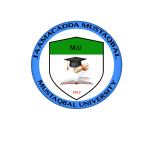Bachelor of Physiotherapy
This department is designed to train qualified physiotherapist who are capable of providing a physiotherapy services to patients with physical problems in pediatrics and adult, OPD & IPD departments using simple and sophisticated medical equipment to restore and rehabilitate patient’s lost function.
Physiotherapy is a profession which involves the interaction between therapists, patients, families and caregivers, in a process of assessing movement potential and in establishing agreed-upon goals and objectives using knowledge and skills unique to physiotherapist. It is one of the medical fields that our country has been lacking in the last 2 decades, therefore creating the need for medical tourism to the neighboring countries.
Course competences
On completion of the course (Bachelor of Science in Physiotherapy) the graduate will
• Acquire skills necessary to prevent, diagnose and treat any condition that influences the physical function and performance of the body.
• Be familiar with supportive measures to physiotherapy included biomedical sciences and basic physiotherapy skills
• Demonstrate knowledge of the pathological basis to disease and the inter professional approach to patient care for various conditions
• Amalgamate theory with practice with the students concentrating on clinical skills and supervised patient contact together with a special project
Roles & Responsibilities
• To be professionally and legally accountable for all aspects of own work, including the management of patients in your care
• To undertake an assessment of patients, using clinical reasoning skills and manual assessment techniques to provide a physiotherapy diagnosis of their condition.
• With appropriate support, to formulate prognosis and recommend best course of intervention, developing discharge plans.
• To formulate and deliver individual and group physiotherapy treatment programme based upon knowledge of the evidence of the treatment options available. This commonly involves manual physiotherapy techniques.
• To evaluate a patients’ progress, reassess and alter treatment programmes if required, developing reflective practice.
• To represent physiotherapy/individual patients at medical team meetings. This will involve discussion of patient care, patient progress and involvement in discharge planning.
• To determine the patients’ understanding of treatment proposals to ensure valid patient consent.
• To understand and work within a legal framework with patients who lack the capacity to consent to treatment
• Be highly skilled in communicating with patients of all ages who have a range of physical and psychological barriers to understanding.
Program Duration
This is a four-year program. Every academic year consists of two 24-week semesters of 20 weeks for theory and 4 weeks for practical field attachment.
Admission Requirements
Admission criteria in health training programmes have far-reaching implications in education and training processes and the outcomes of such programmes, thus, the graduates and the quality of health services. Consideration of the admission requirements to the Community Health Nurse programme is in light of the prevailing health situation in Somalia.
Candidates for direct or in-service admission into the course programme must possess the stipulated qualification requirements in Somalia, and the equivalent, especially in neighboring countries.
Any student seeking admission from any MU Department of Nursing to pursue the course should fulfill the following requirements:
1. Be not younger than 18 years of age.
2. Submit secondary leaving certificate with minimum average marks of not less than 60% from recognized school and umbrella and passed the Somali Government centralized exam.
3. Application for admission.
4. Pay the registration and enrollment fees as per required.
5. Fill the application form fittingly.
6. Successfully pass the university entrance examination,
7. Bring the following documents with you:-
a. Original secondary certificate (both from the school & the government)
b. Original national identity card/passport/birth certificate
c. Two (2) certified clear sets of photocopies of (a) and (b)
d. Seven (7) certified passport sized photos
Assessment Approaches
Formative
Formative assessment is used as a bridge between learning and teaching. It allows instructors to gather real data about students as they work, then adjust their instruction to better serve students at their current learning level. In nursing education, formative assessment has been proven to be highly effective not only for student learning, but for faculty teaching and, as a result, increases the overall quality of learning. Formative assessment used in the department include; Continuous Assessment Tests, Assignments, Quizzes, Random Assessment Tests, End of Semester Examinations and Supplementary Examinations.
Summative
The goal of summative assessment is to evaluate student learning at the end of an instructional unit/module. Summative assessment include; Final Qualifying Examinations (theory), Final Qualifying Examinations (theory and practical), End of Semester Examinations, and Promotional Examinations.
Teaching Approach/Strategies
Teaching approach is a set of principles, beliefs, or ideas about the nature of learning which is translated into the classroom while teaching strategy is a long term plan of action designed to achieve a particular goal. These include the following; Informal Lectures/Discussions, Modified Lectures, Group Discussion, Small Group Discussions, Demonstrations and return demonstration, Role plays, Team Teaching, Project Assignments, Case Presentations, Nursing Care Studies, Self-Directed Learning, Programmed Learning, Simulations, Educational Trips, Film Shows and Problem Based Learning.
Teaching Aids/Instructional Materials
Include the following; Chalk Board, White Board, Flip Chart , Flip Charts Stand, Posters, Poster Stand, Videos, Videos tapes, Video camera, Slides, Slide Projectors, Models of various body parts/organs, Study guides, Lesson plans, Course outlines, Computers, Laptops, LCD projectors, Over Head Projectors, Human Skeleton, Dummies, Human Skeletons, Manikins, Simulators, Real Human Beings (Simulated Patients), and Real Human Body Parts.
